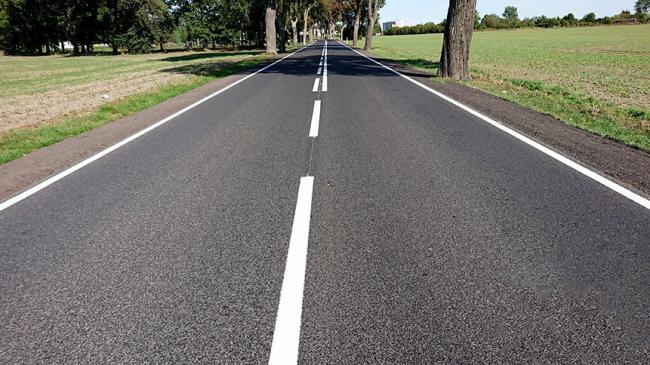Expansion of a local road network is an impulse for the economy development in a given region. Municipal and district roads and administered by municipality heads and district management boards, respectively. Since 2008, successive governments have launched financial instruments which enabled local governments to invest in reconstruction, construction and repairs of district and municipal roads. In 2016-2021, local governments actively used e.g.: the Programme for the Development of Municipal and District Road Infrastructure for 2016-2019, and then the Local Government Road Fund established in 2018 (currently it is the Government Road Development Fund).
In line with the GUS data of 2020, there are over 275 thousand km of municipal roads (including nearly 150 thousand km of paved roads and over 107 thousand km of unpaved roads) and more than 124 thousand km of district roads (including over 115 thousand km of paved roads). In 2020, the Local Government Road Fund adopted the total of PLN 2.7 billion for municipal and district tasks nationwide to finance construction and repairs of road sections totalling 4.4 thousand kilometres. One year later the financing totalled PLN 2.8 billion and enabled construction and repairs of 4.3 thousand km of roads.
Key audit findings
In 2016-2021, the audited local governments spent nearly PLN 276 million to build, reconstruct or repair over 230 km of local roads, while receiving nearly PLN 144 million funds for road investments. At the end of 2021, they managed the road network of over 3.6 thousand km. The financing was used properly and relevant settlements were approved by governors who granted the money.
Most of the audited local governments (14 of 16) properly signed construction work contracts. The majority of them included provisions which protected road operators from their inadequate execution. All road operators demanded the performance bond from contractors. The bond totalled from 5 to 10 percent of the contracts’ value. Only two road operators failed to enforce the performance bond for the entire investment period and one of them returned the bond over 10 months after the deadline set out in the contract.
NIK auditors had no objections to the technical condition of reconstructed road sections. No damages or defects were found that would indicate the use of low-quality materials or improper technology of construction works. Besides, investments were made based on required permits of administration bodies in the fields of architecture and construction. Also, the local governments’ supervision of roadworks was exercised properly in most entities.
Road sections were modernised based on construction projects and road signs on most of them were installed in line with the approved traffic organisation. Irregularities in that respect were identified in four road operators. They were related to obscured, illegible or wrongly installed vertical signs as well as incomplete horizontal signs. Besides, two road operators failed to remove dirt from roads.
NIK points out that most road operators (11 of 16) neglected the obligation to conduct periodic technical inspections of modernised roads. One road operator in the entire six-year audited period did not prepare or pass information to the General Director of National Roads and Motorways about managed and modernised network of public roads.
Local governments explained that they did not have enough money to outsource tasks of this kind in case their employees lacked specialist rights to make the said inspections.
Road operators are obliged to keep records of public roads under their management. The audit findings reveal, though, that only four of 16 road operators kept required and complete road register. In other entities there were irregularities in this area.
Seven audited road operators took direct actions to protect the road network under their management (including the reconstructed road sections) from the traffic of lorries exceeding the maximum acceptable mass and permissible axle load. Five road operators implemented limitations for lorries driving on reconstructed roads and in case of two others limitations applied to other roads which made up the local road network. Other road operators did not establish bans of this type as there were no heavy vehicles on their modernised road sections.
Recommendations
NIK recommends that the road operators take all essential measures to ensure solidity of the road reconstruction and to strengthen supervision over construction processes as part of undertaken road investments.


